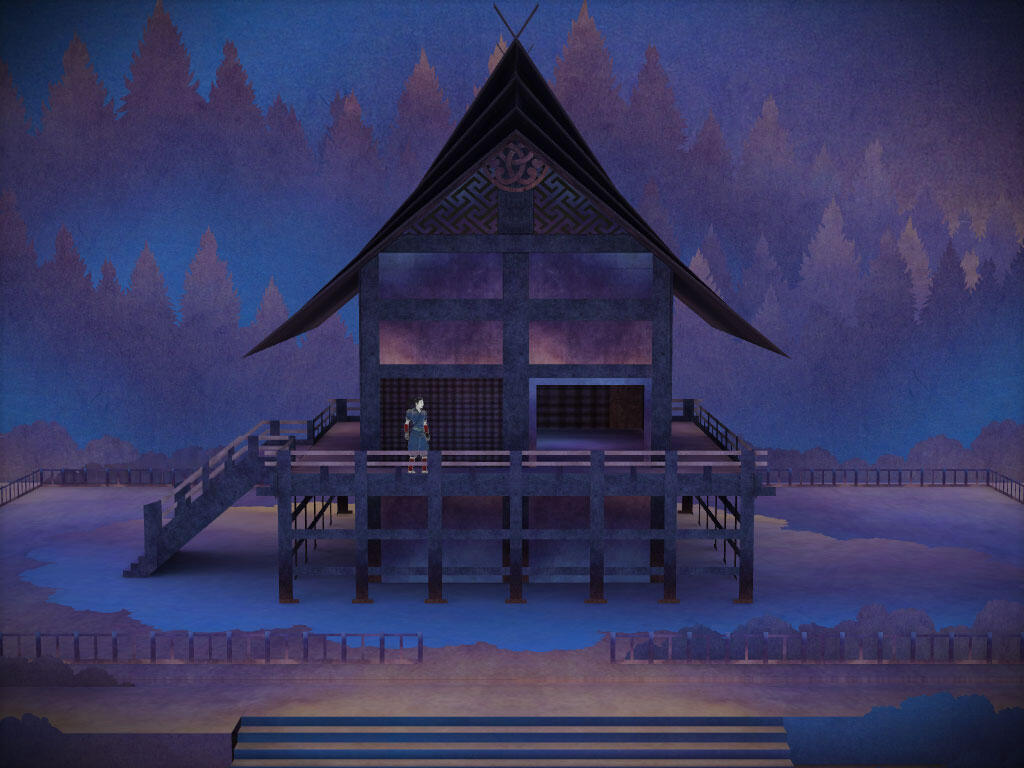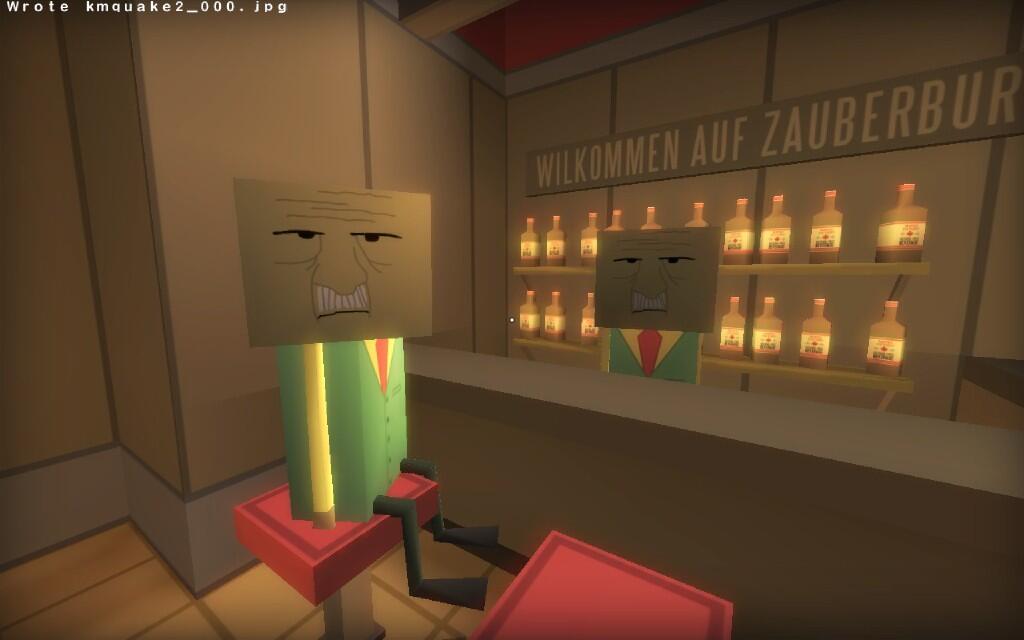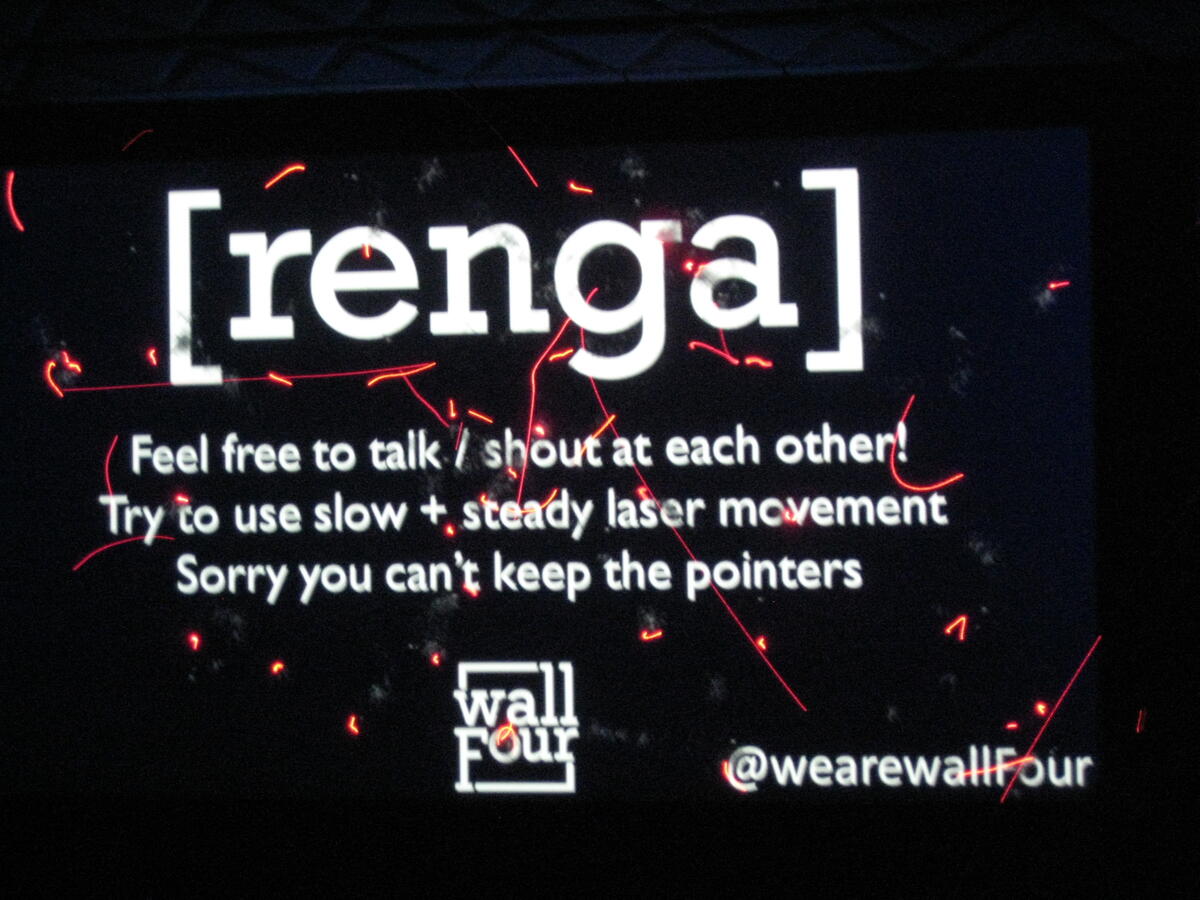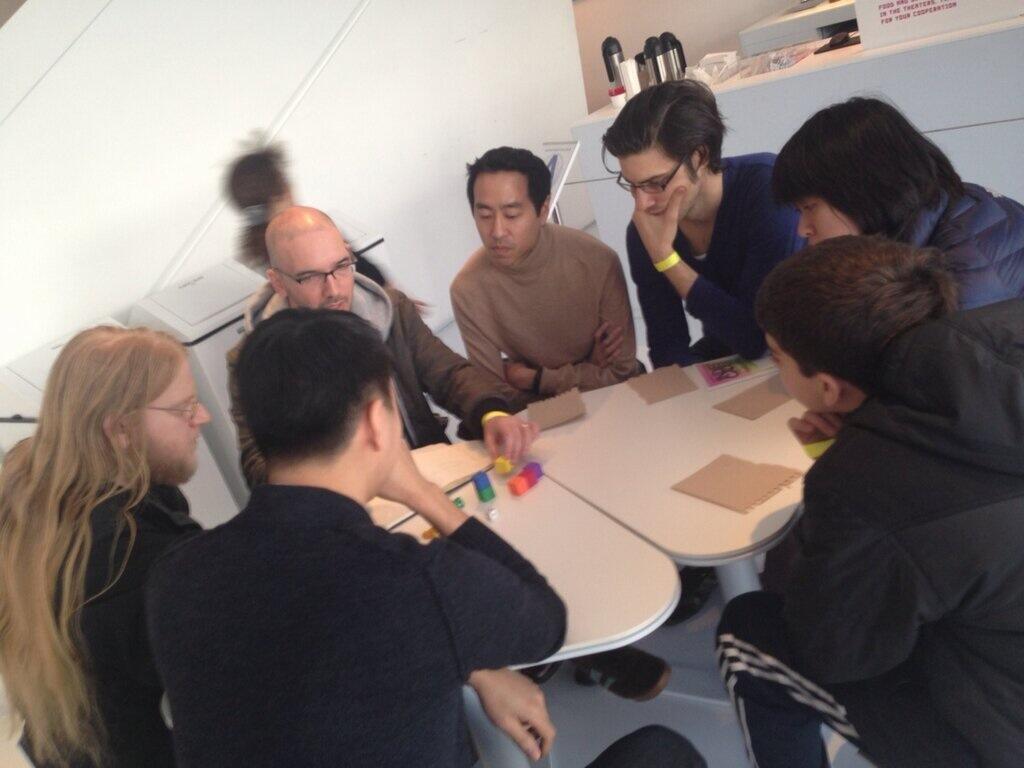Notes from IndieCADE East 2013
This weekend I attended my first indie-game convention, and in fact the very first IndieCADE East, here in NYC. I was there all three days, Friday, Saturday, and Sunday, and took quite a bit from the event. But coming into it, I had no idea what to expect, and was worried that I’d be entirely overwhelmed by games and gamers and game developers, etc.
The fact that there was also a game show-and-tell, which anyone could sign up for, which I planned to sign up for (to demo MechaFrog), didn’t at all help my nerves.
I even ended up tweeting about it, and I never tweet about anything. In fact, going into this, I had no idea how the @ thing worked on Twitter, so was really, really surprised when this happened:

Note from July 2016: Pretty much everything about my Twitter has changed since then.
Nobody told me that people actually responded to each other on twitter, let alone organizations. My impression of the event now changed a bit, and I thought it at least a little less intimidating, but I was still plenty nervous.
Mainly because I had no idea what I was doing. I mean, here I was, trying to show off my own work, when I didn’t know how conventions even worked.
I had no idea how to prepare, or even what the event would be like. So like so many other times in the past, I just went for it to figure out how it’d turn out. Thus, I journeyed all of about an hour and a half to New York City, and went with my cousin (whose thoughts on IndieCADE can be found here) to the Museum of the Moving Image to attend IndieCADE East.
I ended up having a blast. IndieCADE East was an incredibly fun, inspiring experience, and I’m glad I got to participate in it. I got to meet some really cool developers, play some amazing games, watch university students play vampires with flowers, among other things.
Here, I’m going to go through the highlights of each day, although I didn’t take any pictures, so a lot of the images are from my cousin’s camera or scrounged up from the web.
Friday
The actual event took place at the Museum of Moving Image, which is possibly the most modern building I’ve seen in a while. Everything on the first floor was a sleek white, the floors, the walls, the furniture, and there was an almost futuristic vibe about the place.

And the front entrance was adorned with neon-pink text…

..although they did have this gem greet us at the main entrance.
Fortunately or not, I arrived too late to sign up for the show-and-tell. The program had said that sign-ups would be from 4 to 8 PM, but apparently there’d been so many developers that they closed around 10-20 minutes after the convention started. Oops. Some people had even waited at the museum before IndieCADE even started to get a slot – so that’s probably what I’ll have to do for next time if I want to showcase anything.
But it was one weight off my back for now, and I immediately went off to play the selection of games. I didn’t get the opportunity to try out all of them, but there were definitely a few that stuck out in my mind. I believe all of these games have either been nominated for the IndieCADE proper, or have won various other awards, and the quality really does show.
List of Games
Tengami

A calm, adventure (I think?) game set in ancient Japan, Tengami was the first game that I played at IndieCADE. It’s beautiful, with the paper-folding animations, and has a really, really nice soundtrack. It’s quite a bit more slow-paced compared to what I normally play, but somehow that worked for me. And despite my usual ineptitude with puzzles, I actually solved a few on my own.
I didn’t manage to dive deep enough into the demo to grasp the game’s plot, but even so, this is a game that I’m definitely grabbing once it’s out on the iOS store. And the soundtrack too, if the developers release it.
Thirty Flights of Loving

This game? I barely understood it. I watched people play it, I played it myself…it’s a game that tells a story without using any text, and it really makes you think about what’s going on. It won’t give you everything, nor will it explain the details; those are things you’ll have to figure out on your own.
There was a panel discussing this game, and analyzing some of its components, though I unfortunately missed it.
Still, even with my limited understanding, I found it to be a good game. It’s a pretty fluid experience with some nice music, so the game was rather immersive, if odd. Then again, I’ve heard that a lot of the game’s plot has to do with movie references, and I don’t know my way around movies at all, so that might contribute to my understanding (or lack of it) for this game.
But still, even though I didn’t fully grasp the plot, I did like the way the game was presented, and whether you ‘get it’ or not is not something I can determine, in any case.
Find Me A Good One

Speaking of games I barely understood…we can add this one to the list. And unlike Thirty Flights of Loving, there wasn’t any discussion here to tell me at least what other people thought of it, and I don’t think the developer was here either. So all of my thoughts are what I took away from the game, just from fooling around with it for a little while.
You play as a woman who can float, who’s taking care of an oversized boy that’s being attacked by pyramids with wings. So, you set out to try and defeat the pyramid-things…I think. Along the way, there are several other characters that you can ‘recruit’ to help you, and the actual ‘recruiting’ process requires you and your new friend to simultaneously reach wooden doors and go back to the bedroom where the boy is sleeping.
At any point, you can look at the bedroom to see how the boy is doing…except in my run-through I think I accidentally got him killed. Oops.
(And now that I’ve read the official site description, I’ve realized just how off I was. I’m keeping my interpretation intact, though, to show what my thought process was.)
Hokra

Hokra is a sports game, and perhaps the first sports game I’ve played ever since like FIFA 2003. You play on teams of two, and try to hold a ball / puck / thing in your colored goal for as long as possible to fill it up. If you manage to fill up your goals all the way, you win. However, while you have the ball, you can’t sprint, so opponents can catch up to you and steal it unless you pass to your partner.
It’s a really, really simple game, controls-wise. There’s only the control stick for moving, and the A button to sprint (without the ball) or pass the ball. But somehow, it still ended up being highly addicting, not the least because it was really polished and just fun to play.
My strategy was pretty much just to mash A and run at the ball. Generally, like with everything else, I had no idea what I was doing, but it still ended up being really entertaining.
There were plenty of other games on display, but these were the ones I ended up playing more extensively. That’s definitely something to keep in mind for me next time (if possible) – to try everything for longer periods of time so that I have more than just a first impression for some of the games there.
SportsFriends Panel
Speaking about Hokra, the game was featured in that evening’s main session.
It was a panel on SportsFriends (a collection of four games, including Hokra) and the concept of multiplayer gaming. In a nutshell, it was about how multiplayer games stress player to player interactions rather than player to computer interactions, and how sports games have this stigma attached to them and the challenges of overcoming this stigma.
That, plus the design challenges of balancing silliness and ease of play (to make a multiplayer game suitable for parties) with complexity and rigor to stand up to competitive play (for tournaments) made for a very interesting talk.
Oh, and at the very end, the developers and testers of Hokra played a ‘competitive’ match, with live commentary. I think there may be videos floating around of it, but I didn’t get it myself. It was pretty fun to watch, though, which also was one of their points – good party games should also be spectator games, so that people can have fun even if they aren’t the ones playing.
It’s actually kind of tempting for me to make a multiplayer game now, except that I already have a gazillion projects on my plate. But that was the last event for Friday, and a nice way to end my first day.
Saturday
I was at IndieCADE East for all of Saturday, even late into the night for the ‘Night Games’ part of the program. It was a pretty exhausting ride, but there were also plenty of seminars and talks that I got to attend and draw inspiration from.
…but first things first, my cousin and I explored the Museum of the Moving Image, which mainly detailed aspects of the film industry. It was separate from the actual IndieCADE, but it was interesting in its own right, as we got to see how sets, animations, costumes, etc. are designed, and plenty of concept artwork on the recent Rise of the Guardians film. Which I haven’t actually watched, come to think of it.
Oh, and there was an arcade on the third floor, which we got some cool-looking tokens to play with. We tried our hand at quite possibly one of the oldest incarnations of Asteroids…

…and pretty much failed miserably. I don’t think either of us got past the first level. I think my high score was around 2000, compared to like 100000 of the top scores. It was still plenty of fun, though.
Game Slam
The Game Slam was a series of 90 second pitches by game developers, to showcase their works in progress. I think there was a sign-up for this much like the show-and-tell, but it was interesting to see what the developers did to show off their games.
90 seconds is a pretty tight limit, though, and I think some of them got cut off before they could showcase the ‘meat’ of their games, so to speak.
Iron Game Design Challenge
For this event, student teams from NYU’s Game Center and Parsons competed to make games that utilized…a bouquet of flowers.
Sadly, none of their game designs involved smashing the vase. Although that would be rather hard to playtest, admittedly. And speaking of playtesting, it is a really important part of game design, because that’s how developers learn whether their game is viable or not. So both teams brainstormed for a bit, occasionally grabbing some audience members for playtesting, and had to design a game within the specified time frame. Then, in the middle, the challenge was increased by forcing the teams to incorporate another random object donated by the crowd. NYU got a blood bag / energy drink thing, Parsons got a set of keys.
We ended up with vampire Simon Says with flowers on one side (NYU), and a weird tag-like game where players had to steal flowers from back pockets with their teeth on the other (Parsons)…I’m not entirely sure what I should think about those results. It’s pretty cool seeing the design process, and how games evolve as players playtest and figure out what’s working and what’s not, but the results were a bit strange, to say the least.
Ouya
Afterwards, I took a look at the Ouya display. For those that aren’t familiar with it, the Ouya is a video game console that runs on Android, and is supposedly friendly towards indie or hobbyist developers (like me) to put games in front of a TV. I didn’t actually get a chance to play very much on it, as the line for the Ocular Rift (another console, I think?) was really, really long, but I did manage to get my hands on it for a few seconds.

First of all, I was surprised by how tiny the thing is. Maybe it’s because I have no sense of scale, but the thing is a cube of about 3 inches on each side. Compared with other consoles that I’m familiar with (PS3, Wii, etc.)…it’s pretty tiny.
The controller looked nice too, although it didn’t really fit in my hand. I’ve heard that they’re still improving it though, so that’s something to look forward to. Just the idea that even I can make games that run with controllers and a TV screen is pretty exciting, though, and will come in handy if I do ever make a multiplayer game.
And apparently, it had a really, really successful kickstarter that I wasn’t aware of?
Night Games
Saturday evening was a section of its own, called ‘Night Games’, which showcased some different games and events. However, I practically only played one game there, although it was a game that is quite unforgettable. So in the end, Night games for me was practically just…
Renga
This game. I have no idea how to describe it, and it’s something that needs to be experienced to fully be understood. It’s a game that requires 100 players, and 100 laser pointers, where every player becomes almost part of a collective, working together to gather resources, defend a spaceship from attack, and later upgrade said spaceship.

I didn’t personally get a laser pointer, as there were too many people in the auditorium, but it was fun just to spectate as well. Everyone has to work together to move objects / destroy enemies in this game, so disagreements usually didn’t end well. Thus, at first, the game was pretty much everyone yelling at each other to try and reach a consensus, but as a whole we noticeably improved by the end. In addition, the audience was pretty much a part of the game too, even the people who weren’t playing. Whenever an enemy threatened to crash into the ship, everyone freaked out. Whenever we took out a particularly tough challenge, there were claps and cheers.
It is somewhat uplifting to see how well such a large group works together, and I’m pretty curious about the psychology behind it too – if we were a different group, would we have played it differently, or ended up focusing on different aspects of the ship to upgrade? Would our strategy have been different?
There was actually another Renga session on Sunday, and my cousin was tempted to go play / see it again just to answer those questions. In any case, it truly is something that needs to be experienced to understood, and was perhaps the most incredible part of all of IndieCADE East.
Sunday
By Sunday, I was pretty tired. I don’t think I had considered just how exhausting events like this could be, but somehow I still managed to get through the day okay. It probably helps that video games are like caffeine for me, I guess?
Sunday I actually toured some parts of New York, and went to this absurdly huge grocery store with like 7 varieties of peanut butter. I wish I took pictures of it, it’s pretty ridiculous.
Of course, I might just be that one weird kid who has never heard of ‘peanut butter varieties’, but it was still something pretty astounding in my eyes. But I digress.
Game Design Workshop
Sunday’s main ‘event’, so to speak, that I attended was the Game Design Workshop, where the attendees were split into groups and given 3 objects to design their own (physical) game with.
My group was given coins, blocks, and dice, and we set off to make a game in about the hour we were given.

We eventually went with a game mechanic of stacking blocks to earn coins – the further up you were on the stack, the more coins you’d earn. To get even higher, towers could attack other towers to stack on top of each other. But the ones at the very top have the highest risk to go along with that reward – if they lose a battle, they get knocked off, and also lose their coins.
Battles were played by rolling dice, although the exact mechanics hadn’t been determined. Likewise, the number of coins needed to win weren’t determined either, due to lack of playtesting.
Still, I think it was a pretty nice concept for an hour of work. But my cousin ended up coming up with Post-it Pirates for her group, which sounds infinitely cooler than my little tower game.
Physical Games
The very last thing that I saw for IndieCADE on Sunday was a session on the development of physical games (that used video game systems just for scorekeeping / to enhance an experience, or not at all.) Originally, I’d thought it’d be about the game design for physical games, and how it compares to video games, but in the end it was more about the psychology and purpose of games.
Like the SportsFriends panel on Friday, its primary topic was about how games can add onto interpersonal contact, and how technology can subsequently enhance those games.
There also is quite a bit of research ongoing about video games, and how to make them more interactive / social (and not in a social media sense). I’ll have to read more into it to make any remarks about the topic, however.
So that pretty much wrapped up my IndieCADE experience – my cousin and I were going to go back to play some more Asteroids, but the machines closed down before we had a chance to. Still, it was an unforgettable experience, and I ended up with plenty of new friends and a lot of insight on how games work.
Well, clearly it was pretty inspiring, considering the absurd amount of text I wrote about it…this write-up took me two days to complete. I might keep adding pictures to this if I find any, but until then, this was IndieCADE East.
I’m glad I got to see it.